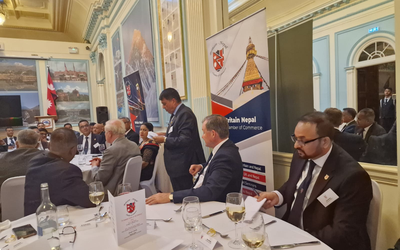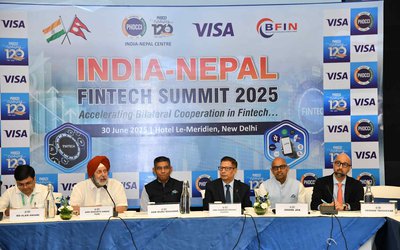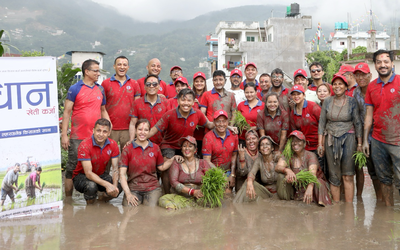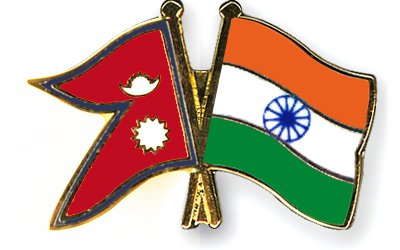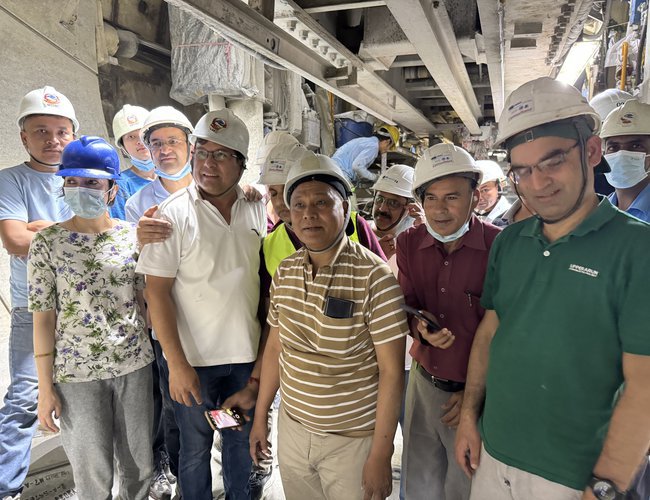
With two successful models of its use, everyone is taking about the use of Tunnel Boring Machine (TBM) to dig tunnels. However, hydropower and irrigation projects are not only digging tunnels. They involve other equally important construction.
Delay in other construction can make successful use of TBM irrelevant. Two tunnels are examples. With his vision, Kul Man Ghising, Managing Director of Nepal Electricity, agrees to use TBM with conditions to start other work in parallel. This kind of visionary thinking makes MD Ghising a successful manager of Nepal's largest public utility.
Looking at two successful experiences of using Tunnel Boring Machine (TBM) to dig the tunnel in time and schedule without much hasel, Managing Director of Nepal Electricity Authority (NEA) Kul Man Ghising has also started using TBM.
However, Ghising does not want to repeat the situation of Bheri-Babair Diversion and Marin Diversion. Though the tunnel of Bheri-Babai Diversion was completed three years ago, it remains unused in the absence of other works like canal, hydel and diversion.
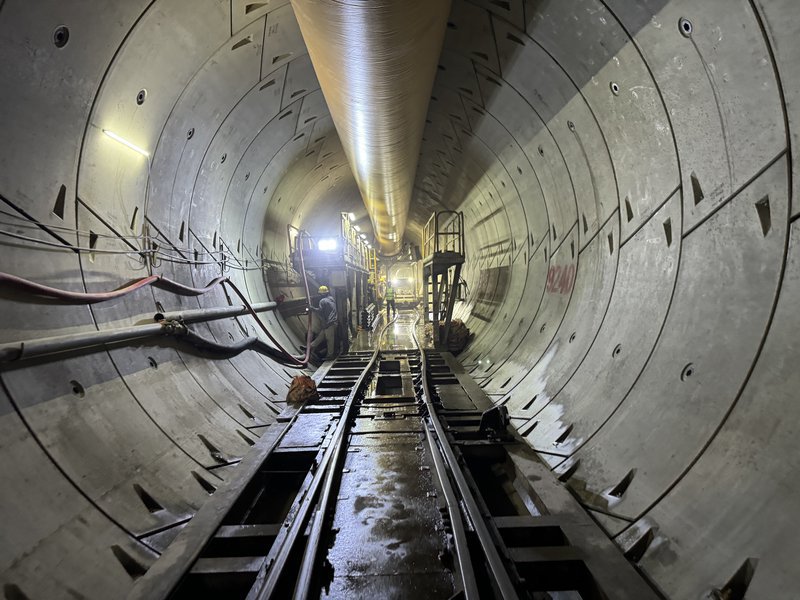
Similarly, the construction of Marin Diversion is on the verge of breakthrough. The process of construction of diversion dam, hydropower plant and transmission line has not yet started.
In order to learn the experience of using TBM and observe the work, the high-level team from NEA recently visited the Marin Diversion project sites.
The team discussed the technical aspects of TBM, problems and challenges in its use, geological complexity, cost and time, quality of work, efficiency and other issues after discussing with the project management and construction experts.
Ghising, Managing Director of the Authority, said that the time taken to dig the tunnels of the two irrigation projects using TBM was short and the work was of good quality, so the two hydropower projects with large tunnels will use this technology.
Ghising said that as the financial management of Upper Arun and Dudhkoshi hydropower projects has reached the final stage and they are about to invite tenders for construction, the tender documents are being prepared to take into account the problems and experiences of tunneling by TBM at Bheri Babai and Sunkoshi Marin.
"Since the length of Sunkoshi Marine Diversion and Dudhkoshi main tunnel is the same, we have advanced the process by digging it by TBM, there is a problem with the access road to reach the TBM in Upper Arun, TBM will also be used in the project where it is possible to bring the machine," Ghising said.
"Although it looks a bit expensive in terms of one-time investment, it is seen that the use of TBM will be cheaper and more effective considering the fact that when digging a tunnel through TBM, there is no need to build other access tunnels, less environmental and social issues, and less time required for construction." He mentioned that the overall management of the project should be done at the beginning so that the tunnel construction can be completed quickly by using TBM, but other structures cannot be completed.
As the Nepal Electricity Authority has started preparations to use Tunnel Boring Meshing (TBM) for tunnelling of the 1063 MW Upper Arun and 635 MW Dudhkoshi hydropower projects, the objective of the mission is to understand the technical and other issues of TBM.
After the successful and effective tunnelling of Bheri Babai and Sunkoshi Marin Diversion Multi-Purpose Project by TBM, this technology will also be used in Upper Arun and Dudhkoshi Hydropower Projects.

The length of the main tunnel of the Upper Arun Semi Reservoir Hydropower Project is 8.4 km. The length of the tunnel of the Dudhkoshi Reservoir Hydropower Project is 13 km. The tunnels of the hydropower projects, which take most of the construction time, are currently being constructed by drilling and blasting using explosives.
A team consisting of Managing Director Kulman Ghising, Managing Director of Upper Arun Hydro-Electric Ltd. Fadindraraj Joshi, Managing Director of Dudhkashi Jalvidyut Company Ltd. Bimal Gurung inspected the Sunkoshi Marin project site and was briefed about the TBM excavated tunnel.
The length of the main tunnel is 13 km and the length of the two access tunnels to be constructed is 5 km. The total length of tunnels to be constructed in the Dudhkoshi project is 18 km. There is no need to construct adits when excavating with TBM. The approximately 7 km access road needed to reach the adit tunnel is not required.
Under the leadership of Upper Arun World Bank and Dudhkoshi Asian Development Bank, the construction is progressing by attracting investments. At the price of 2019, the estimated cost of 1 billion 750 million dollars (about 2 trillion 14 billion) including interest during the construction period and price increase will be raised in Upper Arun, 70 percent of which will be financed by debt and 30 percent by equity.

In the co-financing led by the World Bank, a plan has been made to manage the financial management by raising funds from international financial institutions and domestic banks and financial institutions.
The estimated cost of the Dudhkoshi project is 2 billion 200 million US dollars (approximately Rs. 2 trillion 25 billion) including interest during the construction period. Of this, 1 billion 680 million US dollars will be raised through debt and the rest through equity to manage the finances.
Under the leadership of ADB, various international financial institutions will invest one billion dollars in concessional loans in the project. Of this, ADB has committed to invest $550 million in concessional loans for the project.
- MELAMCHI WATER SUPPLY: No Interruption During Monsoon
- Jun 25, 2025
- KOREAN RETURNEES: Successful Integration
- Jun 25, 2025
- UPPER TRISHULI-1: Engaging With Local
- Jun 25, 2025
- IME GROUP: Twenty Five Years Of Journey
- Jun 24, 2025
- NEPAL’S AIR POLLUTION: A Growing Health Concern
- Jun 24, 2025
